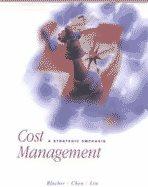
1 - Clara Hernandez is the manager of the Kroger's Grocery Store. She now needs to replenish her supply of strawberries. Her regular supplier can provide as many cases as she wants. However, because these strawberries already are very ripe, she will need to sell them tomorrow and then discard any that remain unsold. Clara estimates that she will be able to sell 10, 11, 12, or 13 cases tomorrow. She can purchase the strawberries for $3 per case and sell them for $8 per case. Clara now needs to decide how many cases to purchase. Clara has checked the store's records on daily sales of strawberries. On this basis, she estimates that the prior probabilities are 0.2, 0.4, 0.3, and 0.1 for being able to sell 10, 11, 12, and 13 cases of strawberries tomorrow. (3 points) a. Develop a decision analysis tree of this problem by identifying the decision alternatives, the states of nature, and the payoff table. b. If Clara is dubious about the accuracy of these prior probabilities and so chooses to ignore them and use the maximax criterion, how many cases of strawberries should she purchase? c. How many cases should be purchased if she uses the maximin criterion? d. How many cases should be purchased if she uses the maximum likelihood criterion? e. How many cases should be purchased according to Bayes' decision rule? f. Clara thinks she has the prior probabilities just about right for selling 10 cases and selling 13 cases, but is uncertain about how to split the prior probabilities for 11 cases and 12 cases. Reapply Bayes' decision rule when the prior probabilities of 11 and 12 cases are (i) 0.2 and 0.5, (ii) 0.3 and 0.4, and (iii) 0.5 and 0.2. 1 - Clara Hernandez is the manager of the Kroger's Grocery Store. She now needs to replenish her supply of strawberries. Her regular supplier can provide as many cases as she wants. However, because these strawberries already are very ripe, she will need to sell them tomorrow and then discard any that remain unsold. Clara estimates that she will be able to sell 10, 11, 12, or 13 cases tomorrow. She can purchase the strawberries for $3 per case and sell them for $8 per case. Clara now needs to decide how many cases to purchase. Clara has checked the store's records on daily sales of strawberries. On this basis, she estimates that the prior probabilities are 0.2, 0.4, 0.3, and 0.1 for being able to sell 10, 11, 12, and 13 cases of strawberries tomorrow. (3 points) a. Develop a decision analysis tree of this problem by identifying the decision alternatives, the states of nature, and the payoff table. b. If Clara is dubious about the accuracy of these prior probabilities and so chooses to ignore them and use the maximax criterion, how many cases of strawberries should she purchase? c. How many cases should be purchased if she uses the maximin criterion? d. How many cases should be purchased if she uses the maximum likelihood criterion? e. How many cases should be purchased according to Bayes' decision rule? f. Clara thinks she has the prior probabilities just about right for selling 10 cases and selling 13 cases, but is uncertain about how to split the prior probabilities for 11 cases and 12 cases. Reapply Bayes' decision rule when the prior probabilities of 11 and 12 cases are (i) 0.2 and 0.5, (ii) 0.3 and 0.4, and (iii) 0.5 and 0.2







